Class 5 SST HOTS Questions - Globes and Maps
Q1: How do latitudes and longitudes help in locating a place on the globe?
Ans: Latitudes and longitudes are imaginary lines that create a grid on the globe. By knowing the specific latitude and longitude of a place, you can pinpoint its exact location on the globe.
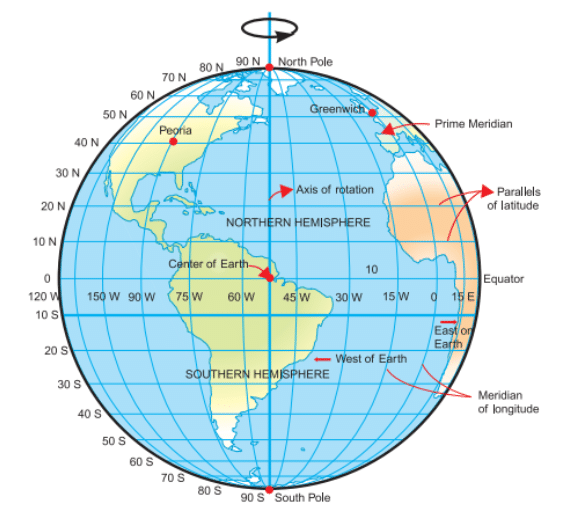 Grid
Grid
Q2: What is the function of an axis on a globe, and what are its end points called?
Ans: An axis is an imaginary line on which the globe rotates, similar to how the Earth rotates. The endpoints of the axis are called the North Pole and the South Pole.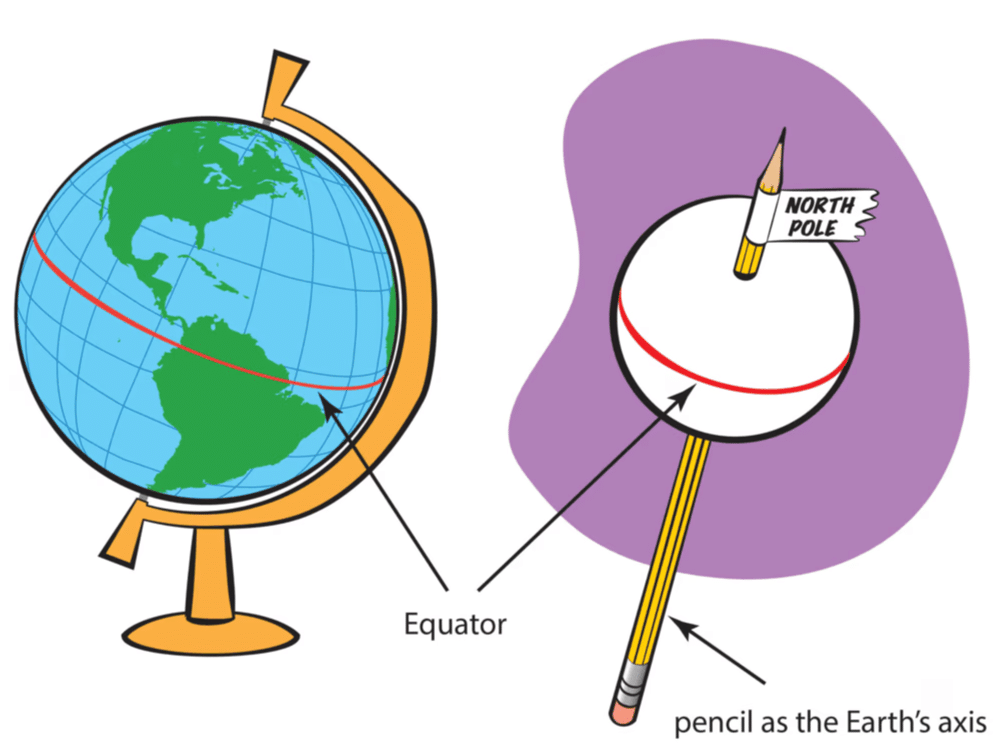 Axis of Globe
Axis of Globe
Q3: Describe how latitudes are arranged on Earth and what is special about the Equator?
Ans: Latitudes are imaginary lines drawn parallel to the Equator around the globe. The Equator is the largest latitude line and is labeled as 0° latitude, dividing the Earth into the Northern and Southern Hemispheres.
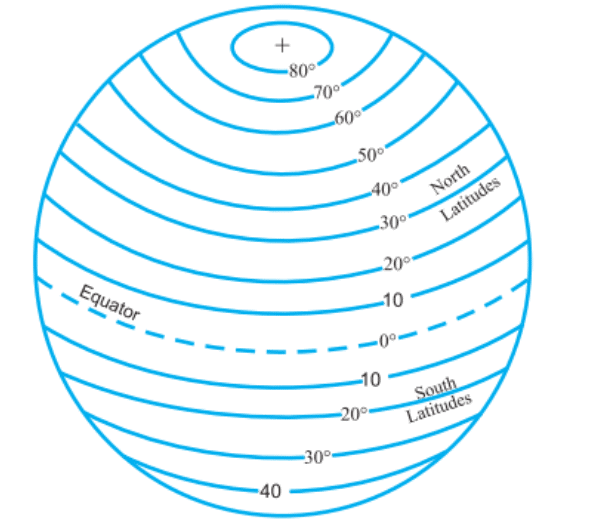 Latitudes
Latitudes
Q4: Explain the concept of longitudes and how they differ at the Equator compared to the poles.
Ans: Longitudes, or meridians, are lines that run from the North Pole to the South Pole. They are closest together at the poles and farthest apart at the Equator, forming great circles that converge at each pole.
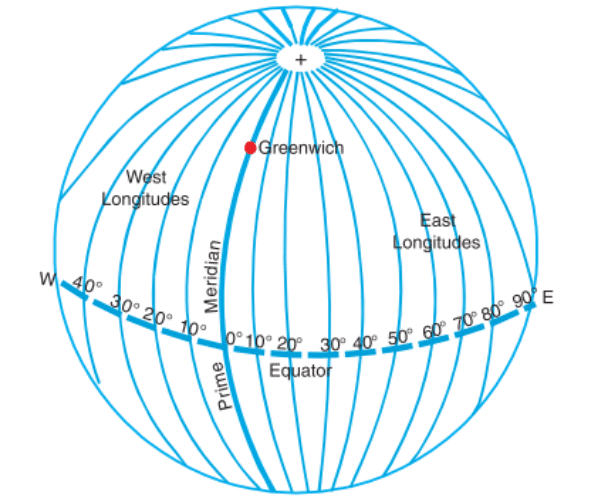 Longitudes
Longitudes
Q5: How does the International Date Line affect the date when it is crossed?
Ans: The International Date Line, located at approximately 180° longitude, causes the date to change by one day when crossed. If you travel east across the line, you lose a day; if you travel west, you gain a day.
Q6: Why are sub-directions like North-East and South-West important in map reading?
Ans: Sub-directions such as North-East and South-West provide more precise navigation and orientation than just the four main directions. They help in identifying locations that lie between the primary directions, allowing for more accurate positioning and movement directions on maps and globes.
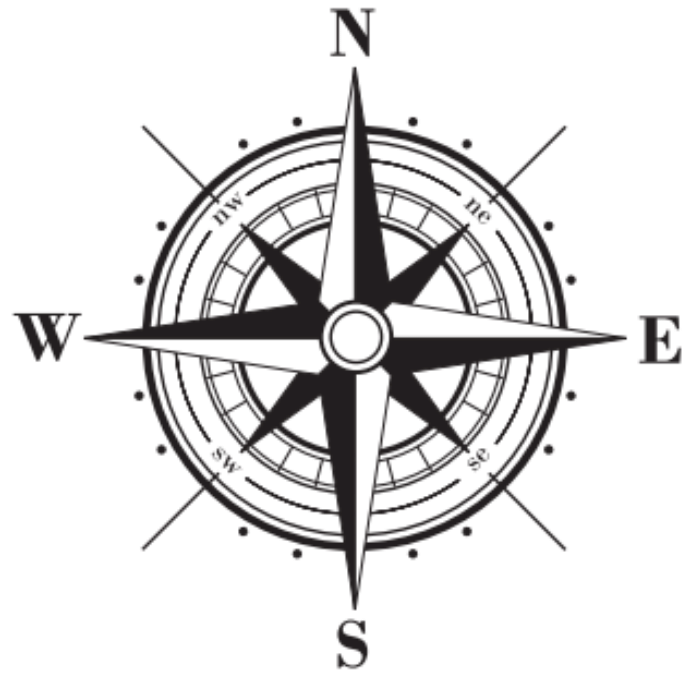 Directions & Sub-Directions
Directions & Sub-Directions
Q7: What purpose does the Prime Meridian serve on a globe, and why is it significant?
Ans: The Prime Meridian serves as the zero-degree longitude line from which all other longitudes are measured. It is significant because it establishes the basis for the world's time zones and helps in determining geographical coordinates in the Eastern and Western Hemispheres.
Q8: What is cartography?
Ans: Cartography is like drawing and making maps. People who do cartography are called cartographers. They make maps to help us understand where places are, how to get there, and what the places look like.
Q9: Why do the maps of the larger areas have chances of more errors?
Ans: Maps of larger areas have more chances of errors because when you try to put a big round Earth onto a flat piece of paper, some parts might get squished or stretched. Imagine if you tried to wrap an orange peel onto a flat paper – some parts would not fit perfectly, right? That's why bigger maps can have more mistakes.
Q10: What are the elements of a map? What is the importance of elements in a map?
Ans: Directions, scale, colors, labels, symbols, etc are the elements of a map. help us understand the information on the map.
(i) Symbols show things like mountains, rivers, and cities.
(ii) Colors can show different things like forests, deserts, and oceans.
(iii) Labels tell us the names of countries, cities, and other important places.
Q11: Why do you think it is impossible to see the whole globe at once without rotating it?
Ans: A globe is a round model of the Earth. Just like when you stand on a big ball, you can't see the other side without walking around to it, you can't see the whole globe without rotating it. This is because it's a sphere, and we can only see one half of a sphere from one viewpoint.
Q12: What does the scale of a map indicate?
Ans: The scale of a map indicates the ratio between the distance on the ground and the corresponding distance on the map. This helps users understand how much area on the map represents the actual ground distance.

|
33 videos|264 docs|50 tests
|
FAQs on Class 5 SST HOTS Questions - Globes and Maps
| 1. What is the difference between a globe and a map? |  |
| 2. Why are maps important for understanding geography? |  |
| 3. How do scale and symbols work on a map? |  |
| 4. What are the different types of maps, and what do they show? |  |
| 5. How can I use a globe or map to find my location? |  |
















